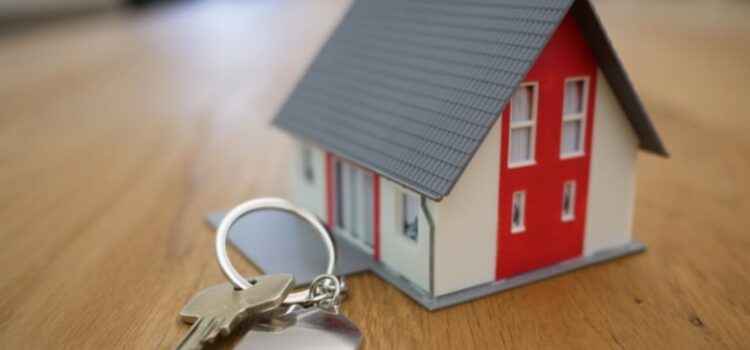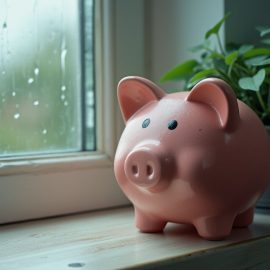

This article is an excerpt from the Shortform book guide to "The Barefoot Investor" by Scott Pape. Shortform has the world's best summaries and analyses of books you should be reading.
Like this article? Sign up for a free trial here .
Do you dream of buying a home? How much money do you need to save for a house down payment in your legislation?
Buying a home is one of the best investments you can make, despite fluctuations in pricing and shifts in the economy. It’s like a long-term savings plan—not only do you need to save for a house down payment, but any increase in value won’t be taxable until you decide to sell.
Here is how to create a feasible plan to save for a 20% house down payment.
How to Save for a House Down Payment
Building a cash reserve required for a house down payment is tough but people make it even harder by committing the following mistakes:
Mistake #1: You Rent, but Don’t Save for a Down payment. Renting often costs less than owning a house due to a lack of maintenance costs, but renters often don’t put the difference into savings. Instead, while you rent, use the money that you would put toward maintenance to save for a house down payment.
Mistake #2: You Think the Housing Bubble Needs to Break First. A housing bubble occurs when the prices of homes exceed their real value. Australia is currently in one of the longest-lived housing bubbles in history, though recently, prices appear to be coming down.
Regardless of what the market does, saving for a house is worth the effort. You can’t control when the bubble will burst, but you can control your income and your savings. Once you’ve saved enough (discussed later in this step), buying makes sense. Plus, Australia has some of the lowest interest rates in the world, so if you buy within your means, you have more than a good chance of paying off that debt.
Mistake #3: You Buy More Home Than You Can Afford. Buying more house than you can afford hampers your ability to pay it off in the long run. This can happen for several reasons:
- You save enough for a down payment, but can’t pay the monthly payments in the long term.
- The bank lends gives a larger loan than you can afford to pay off.
- After buying, you have children, which can be expensive, especially if one parent stops working to care for the children.
To avoid these pitfalls, do the following:
- Save for a 20 percent down payment at minimum. This will increase your chances of being able to pay off the remainder of the loan because the payments will be smaller.
- Take a smaller loan than the bank offers you.
- Factor the cost of having children into how much you’ll be able to afford each month.
Mistake #4: You Believe in Starter Homes. Some people think they can buy a less costly home and use the equity they build to buy a more expensive, long-term property later. In reality, this doesn’t often work because the initial costs of buying a home are so great that it can take longer to recover than the time you’re planning to live in the house. Instead, plan to buy a home that you’ll live in long term, and consider investing in the additional property later.
Mistake #5: You Have a Rigid Vision of Where You Want to Live. You might think it’s impossible to own a home because the cost of living in your ideal place of residence is too great. For example, an apartment near your city’s trendy shopping district will likely cost more than one on the outskirts.
Consider an alternative: living in a place where you can afford a home, even if it’s not exactly where you’d envisioned. For example, in Melbourne, the price of apartments has become very reasonable in recent years because there are many available. Or, consider living within commuting distance of a city where it’s often cheaper to purchase a home.
4 Steps to Save for a House Down Payment
Ideally, you’re aiming for a 20 percent deposit so you won’t have to pay for lender’s mortgage insurance, or LMI. (Shortform note: In the U.S., this is called private mortgage insurance, or PMI). Mortgage insurance has nothing to do with protecting your investment—it’s for the bank’s peace of mind in case you default on your mortgage. There’s really no good reason to pay it and by saving enough of a down payment, you won’t have to.
Here are the steps:
1. Calculate how long it will take you to save for a down payment. If you’ve followed the steps, you’re already directing 20 percent of your monthly income toward your Fire account.
Assuming you and your partner each earn the average wage for Australia ($83,445 gross per person) your take-home pay is $5,250 per person, or $10,500 per month together. If you set aside 20 percent of your income toward saving for a home, you’ll have enough for a $100,000 down payment in four years.
But it’s possible to save enough faster if you save more. For example, if you live on one person’s wages and put the other person’s wages toward a down payment, you could save nearly a $100,000 deposit in just 19 months.
2. Devise additional ways to save. Here are some options:
- Cut your rent expenses by living somewhere cheaper.
- As discussed in Step 4, earn extra income through freelancing.
3. When it’s time to buy, aim for a home where the monthly payment will be less than 30 percent of your take-home pay. Any more, and you run the risk it will be hard to pay off. In addition to the list price, look at what homes have sold for in the neighborhood to get a sense of how much the home could ultimately sell for.
4. Consider the following when choosing a mortgage and mortgage lender:
- Don’t buy special features, like loans with repayment holidays.
- Do your research to find the cheapest variable rate possible. Having a variable rate means that your interest rate will follow the market, which keeps you from being locked in at a high interest rate. Plus, if rates drop, you might want to change your mortgage to another bank, but you’ll be charged for it. Cheap variable rates help you avoid that.
- Look for a “cash-back mortgage broker”—a mortgage broker who will pass along the money the bank pays them for connecting you to their loan program. This could be up to $1,000 a year for the duration of the loan.
Exercise: Save for a 20% House Down Payment
Make a plan to save for a house.
- What percentage of your income can you realistically put toward your down payment each month?
- How long would it take you to save for a house down payment?
- Does the above feel like a reasonable timeline for you? Why or why not?
- Discuss one or two things you could do to bring in additional income to reach your goal sooner.

———End of Preview———
Like what you just read? Read the rest of the world's best book summary and analysis of Scott Pape's "The Barefoot Investor" at Shortform .
Here's what you'll find in our full The Barefoot Investor summary :
- A 10-step plan to eliminate debt and build wealth
- How you can increase your income
- Why you need to focus on cultivating long-term investments






